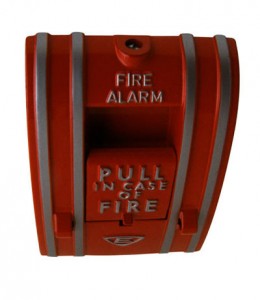The Occupational Safety and Health Administration (OSHA) has guidelines that all employers must follow regarding fire safety. These rules were born out of preventable tragedies like the Triangle Shirtwaist Factory Fire in New York City in 1911. There, nearly 150 women and young girls died because of locked fire doors and ineffective fire extinguishing systems.

Here is an overview of the current OSHA workplace fire safety standards:
- Building Fire Safety Exits – Every workplace must have at least 2 fire safety exits. These exits must not be blocked or locked at any time. The building must have unobstructed exit routes, and those exits must be clearly marked.
- Portable Fire Extinguishers – Each building must have a full compliment of working fire extinguishers. Any employee expected to use them, must be trained in how to use them. These fire extinguishers have to be properly maintained. If an employer does not wish the employees to fight a fire, clear escape plans must be developed and posted.
- Emergency Evacuation Planning – Employers need to have a written evacuation plan that is clear and understandable. New employees should be trained in this plan, and current employees must be notified when changes are made.
- Fire Prevention Plan – Employers need to inform their employees about any fire hazards that may accompany their jobs. Procedures should be in place for handling of all flammable substances. New employees should be trained in this plan, and current employees must be notified when changes are made.
- Fire Suppression System – Buildings need to have a working and maintained system to suppress any fire that may occur. A sprinkler system would be an example.
These regulations are not just for show. They have saved lives, and if followed, will continue to do so. Employers must not think of them as a burden, but as an investment in their business and employees. If you believe your company is in violation of their safety obligations, you have the right to file a complaint with OSHA.
